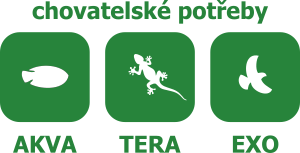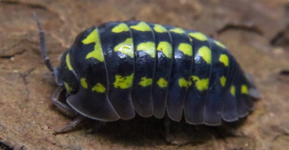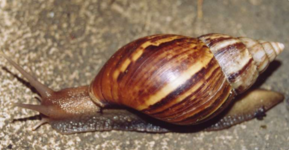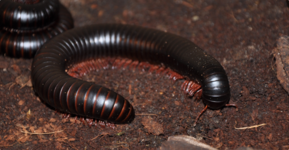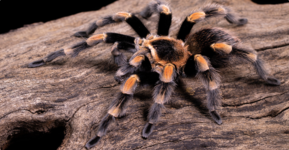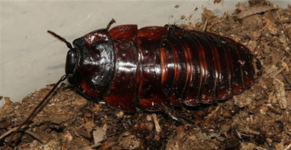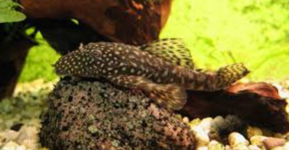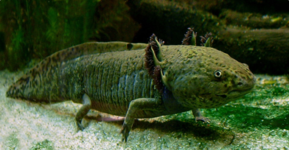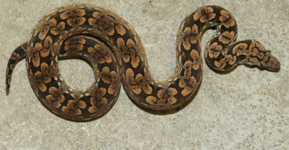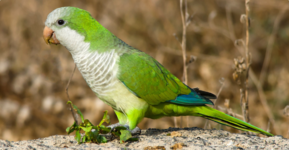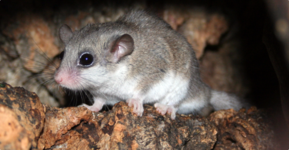 Welcome to the Eco_zoo_corner, which was founded on 9 December 2020 and was created in connection with the project Innovation of teaching zoological subjects of KEŽP (FRUP_2020_30, the project of the Competition for Development Projects of Palacký University in Olomouc). The aim of the Eco_zoo_corner is primarily to support the practical teaching of our students, but at the same time it should also serve for education and ecological awareness of the general public. It is a place where children, students, teachers and other people interested in nature and ecology can meet. Here you can exchange your knowledge, discuss various issues and gain new insights.
Welcome to the Eco_zoo_corner, which was founded on 9 December 2020 and was created in connection with the project Innovation of teaching zoological subjects of KEŽP (FRUP_2020_30, the project of the Competition for Development Projects of Palacký University in Olomouc). The aim of the Eco_zoo_corner is primarily to support the practical teaching of our students, but at the same time it should also serve for education and ecological awareness of the general public. It is a place where children, students, teachers and other people interested in nature and ecology can meet. Here you can exchange your knowledge, discuss various issues and gain new insights.
The centrepiece of the Eco-zoo-corner is the zoological exhibition, which was created in cooperation with the Olomouc Zoo, NaturaServis s. r. o. in Hradec Králové. By arrangement, it is possible to organize a guided tour for kindergartens, primary, secondary and higher schools, as well as for the general public. You will be able to learn about the ecology of the species and the causes of their endangerment. You can also see the department's invertebrate collection and learn about current research.
Looking forward to seeing you in the Eco-zoo-corner:
Martin Rulík
martin.rulik@upol.cz, +420 585 634 569
Ivan H. Tuf
ivan.tuf@upol.cz, +420 585 634 556
Lukáš Weber
lukas.weber@seznam.cz, +420 585 634 575
Barbora Ďurajková
barboradurajkova@gmail.com, +420 585 634 571
Spolupráce a sponzoring:
Blatticomposting
Blatticomposting or composting with cockroaches (from the Latin name for cockroaches - Blattodea), is a new way of processing bio-waste and converting it into compost. The resulting product is a high quality biocompost - so-called blatticompost, or cockroach droppings, which, like vermicompost (the product of earthworm activity), can be used as a fertiliser for indoor and outdoor plants.
Invertebrata
The term invertebrate does not refer to any natural taxon in zoology. Given the human tendency to have a dichotomous view of the world, the group invertebrates usually includes all animals except vertebrates. It therefore includes representatives of more than three dozen tribes. At present, they include more than a million described species, but there are many more undescribed species. Estimating the total number of species is very difficult, so educated guesses range from three to thirty million species. The oldest animals are not known from the fossil record at all, as they probably had soft bodies not unlike jellyfish - they did not need hard shells because there were no predators. The oldest fossil of an organism that has recently been identified as an animal belongs to a member of the genus Dickinsonia, which lived 575 million years ago and thus represents the oldest known invertebrate animal so far.
The longest living species of animal is the Arctic marine bivalve (Arctica islandica), which can live up to 500 years. However, species that are capable of cryptobiosis (a temporary reduction in metabolism below detectable levels, such as turtles) can "live" much longer. From the Siberian permafrost, scientists have recovered live nematodes that supposedly froze there 30-40 thousand years ago! The smallest animal is hard to find, especially without a microscope. Also, it is useful to compare the size of adults, not juveniles, larvae or embryos. The smallest animals are thought to be the fish moths (Myxozoa), some species of which are only tens of micrometers in size. The largest invertebrates are unrivalled cephalopods, with the giant crab (Architeuthis dux) reportedly growing up to sixteen metres.
In our inventory you can currently see representatives of molluscs, crustaceans, centipedes, arachnids and various insects.
Vertebrata
Vertebrates are a less abundant group of animals compared to invertebrates. Around 66,000 species are known on our planet so far, with 20% of them facing extinction and around 60% showing a significant decline in abundance over the last decades. The oldest representatives of the vertebrate subtribe discovered in China (genus Haikouichthys) date back to the Cambrian explosion 525 million years ago.
Among the interesting facts is that the longest living species confirmed is the small-headed shark (Somniosus microcephalus), which apparently lives up to 400 years (and reaches maturity at 150 years). The largest vertebrate is the basking shark (Balaenoptera musculus), which reaches up to 33.6 m and weighs around 185 tonnes. At 7.7 mm long, the Papuan frog (Paedophryne amanuensis) is probably the smallest vertebrate in the world.
In our inventory you can see representatives of species of fish, amphibians, reptiles, birds and mammals.
Department in the media (in czech)
Yarmarok Myru – Studio ČT24 (dopoledne - čas 2h 13min od začátku pořadu ), (odpoledne - čas 43 min) (03.04.2022)
Bahno z polí ničí majetky – seznamzpravy.cz (13. 03. 2022)
Otrava řeky Bečvy – Televizní noviny Nova Plus (15. 11. 2020, 19:30 h, 24:31)
Větrník - Host ve studiu – ČRo Olomouc (11. 11. 2020, 10:04 h)
Eroze: Pole v nenávratnu - ČT - Nedej se (27.09.2020)
Volby do zastupitelstev krajů – ČT24 (18.09.2020, 13:00 min)
Přírodovědci našli na Borneu nejmenší druh hvězdnatky, pojmenovali ji Thismia minutissima – Žurnál Online Zpravodajství z univerzity (12. 8. 2020.8:00)
Krajinářský workshop - Zpravodaj Slatinky (01.07.2020, str. 5)
Hraboši jsou prý v 80 pct ozimů, ve Vlčnově na ně mají speciální stroj – ČTK, České noviny (úterý 25. 2. 2020, 15:36)
Zemědělci se tvrdě ohradili proti výtkám ekologů – Velké zprávy Prima TV (čtvrtek 20. února 2020, 18:00 h, 9:22)
Botanici na Borneu objevili nový druh masožravé láčkovky – Žurnál Online Zpravodajství z univerzity (čtvrtek 20. únor 2020, 8:00)
Na Zoologické dny přijelo téměř pět stovek odborníků z Česka i ze zahraničí – Žurnál Online Zpravodajství z univerzity (úterý 11. únor 2020, 8:00)
Na Zoologické dny Olomouc 2020 přijedou stovky odborníků a studentů – Žurnál Online Zpravodajství z univerzity (pondělí 3. únor 2020, 14:00)
Vyšší počty hlodavců v jednom roce znamenají vyšší riziko nakažení klíšťovými chorobami v roce následujícím - TV NOVA, 26 m 9 s (Zprávy 2. 2. 2020)
Přemnožené hlodavce bude zřejmě možné opět hubit posypem na povrch půdy. Opatření vypíše Ústřední kontrolní a zkušební ústav zemědělský. Proč volí tuto kritizovanou variantu? - ČRo Plus Odpolední Plus, 15:30 h (23.1.2020)
Krtci kvůli mírné zimě udeřili dřív, likvidují zahrady. RADY, jak je vypudit - TV NOVA (19.1.2020)
Odborníci z PřF se podílí na vývoji nových metod monitorování dopadů zemědělské politiky EU - zurnal.upol.cz (22.10.2019)
Sypat jed proti hrabošům na holá pole je nebezpečné, varuje vědec - Blesk.cz (22.08.2019)
Sypat jed Stutox II na holá pole bez vegetace? Nebezpečné - Týden.cz (22.08.2019)
Otrava čápů potvrzena - Události v regionech Ostrava (22.08.2019)
Zajíci otráveni jedem na hraboše - Události v regionech Brno (15.08.2019)
HLASUJTE: Jste pro plošné hubení hrabošů jedem? - ČRo Plus (13.08.2019)
Téma: přemnožení hrabošů - Káva o čtvrté v 16:04 h ČRo Dvojka (02.08.2019)
Vědci zjistili, že intenzivnější zemědělství uškodí přírodě méně než rozšiřování polí - zurnal.upol.cz (15.7.2019)
Čím víc hrabošů, tím víc nakažených klíšťat: Do přírody už jen s repelentem! - expres.cz (01.07.2019)
Čeští vědci předvídají výskyt klíšťat - Studio 6 (01.07.2019)
Riziko klíšťových infekcí souvisí s přemnožením hrabošů, shodují se vědci - lidovky.cz (30.06.2019)
Riziko klíšťových infekcí souvisí s přemnožením hrabošů, shodují se vědci - 24zpravy.com (30.06.2019)
Riziko klíšťových infekcí souvisí s přemnožením hrabošů - zoommagazine.iprima.cz (29.06.2019)
Kde v Česku hrozí nejvíce infekčních nemocí od klíšťat? Vědci přišli s překvapujícím zjištěním, co o tom rozhoduje! - Blesk (29.06.2019)
Přemnožení hraboši: Kvůli nim vyšší riziko nakažení klíšťaty - hanackyvecernik.cz (28.06.2019)
Riziko klíšťových infekcí souvisí s přemnoženými hraboši - Žurnál UP (27.06.2019)
Premnoženie tohto hlodavca je nebezpečné zvýšeným rizikom kliešťových infekcií po celej Európe - hlavnespravy.sk (27.06.2019)
Boreliózu způsobují přemnožení hraboši - Ahaonline.cz (27.06.2019)
Přemnožení hraboši nesou zvýšené riziko šíření nebezpečné nemoci - vlasteneckenoviny.cz (27.06.2019)
Vědci se bojí extrémního nárůstu nemocí od klíšťat, můžou za to myši (VIDEO) - tn.nova.cz (27.06.2019)
Vědci: Riziko klíšťových infekcí souvisí s přemnožením hrabošů - zemedelec.cz (26.06.2019)
Vědci: Riziko klíšťových infekcí souvisí s přemnožením hrabošů - pharmnews.cz (26.06.2019)
Přemnožení tohoto hlodavce je nebezpečné zvýšeným rizikem klíšťových infekcí po celé Evropě - stalose (26.06.2019)
Vyšší riziko klíšťových infekcí souvisí s přemnoženými hraboši, prokázali čeští vědci - Czech news (26.06.2019)
Vědci: Riziko klíšťových infekcí souvisí s přemnožením hrabošů - Frekvence 1 (26.06.2019)
Vyšší riziko klíšťových infekcí souvisí s přemnoženými hraboši - novinky.cz (26.06.2019)
Riziko klíšťových infekcí souvisí s přemnožením hrabošů - Olomoucká Drbna (26.06.2019)
Riziko klíšťových infekcí souvisí s přemnožením hrabošů - ČT 24 (26.06.2019)
Vědci: Riziko klíšťových infekcí souvisí s přemnožením hrabošů - Ekolist (26.06.2019)
Klíšťové infekce souvisí s přemnoženými hraboši - sciencemag.cz (26.06.2019)
Riziko klíšťových infekcí souvisí s přemnožením hrabošů - twnews.cz (26.06.2019)
Vědci z Olomouce se zaměřili na klíšťata - 21. století (26.06.2019)
Riziko klíšťových infekcí souvisí s přemnožením hrabošů - sputniknews.com (26.06.2019)
Hraboši likvidují pole, v některých regionech poškodili 80 procent porostů - idnes.cz (25.06.2019)
Hraboši likvidují pole, v některých regionech poškodili 80 procent porostů - theworldnews.net (25.06.2019)
Na Hané se přemnožili hraboši. Ničí úrodu na polích i v zahrádkách - prostejovsky.denik.cz (19.06.2019)
Stonožky mohou lovit i pod vodou, zjistili badatelé - Mladá Fronta Dnes, Olomoucký, s. 13: Kamenský, S. (29.05.2019)
Vědci zjistili, že se některé stonožky potápí za potravou - Hanácký Večerník (28.05.2019)
Stonožky umí lovit i pod vodou - Sciencemag.cz (28.05.2019)
Stonožky jako potápěči. Vědce zaskočilo, jak zdatně se noří pod vodu za potravou - Novinky.cz (27.05.2019)
Některé stonožky se umí potápět za potravou, popsali vědci z Olomouce - ČT 24 (27.05.2019)
Některé stonožky se k překvapení vědců zdatně potápí za potravou - zurnal.upol.cz (27.05.2019)
Některé stonožky se zdatně potápí za potravou, svědectví o tom podali speleologové - olomouc.cz (27.05.2019)
La Biología Subterránea: un mundo por descubrir - bioespeleologia.blogspot.com (20.05.2019)
Stavět kanály?- Hanackenoviny.cz (05.01.2019)
O vědeckém bádání - zurnal.upol.cz (05.01.2019)
Publikuj, nebo zmiz- Mladá fronta dnes (30.01.2019)
Rozhovor s Tomášem Václavíkem o globálních výzvách - iDNES (26.11.2017)
15 tisíc vědců varuje před zničením Země - Lidové noviny (20.11.2017)
Denně si ničíme hektary půdy - MF Dnes (16.09.2017)
Mezinárodní konference Degradation and revitalization of soil and landscape - ČT (11.09.2017)
Pedologové budou v Olomouci hledat cesty pro ochranu a revitalizaci půdy - Žurnál UP (08.09.2017)
Mezinárodní konference Degradation and revitalization of soil and landscape - Novinky.cz (07.09.2017)
Vědci potvrdili vliv UV záření na invazivnost rostlin - Žurnál UP (15.05.2017)


